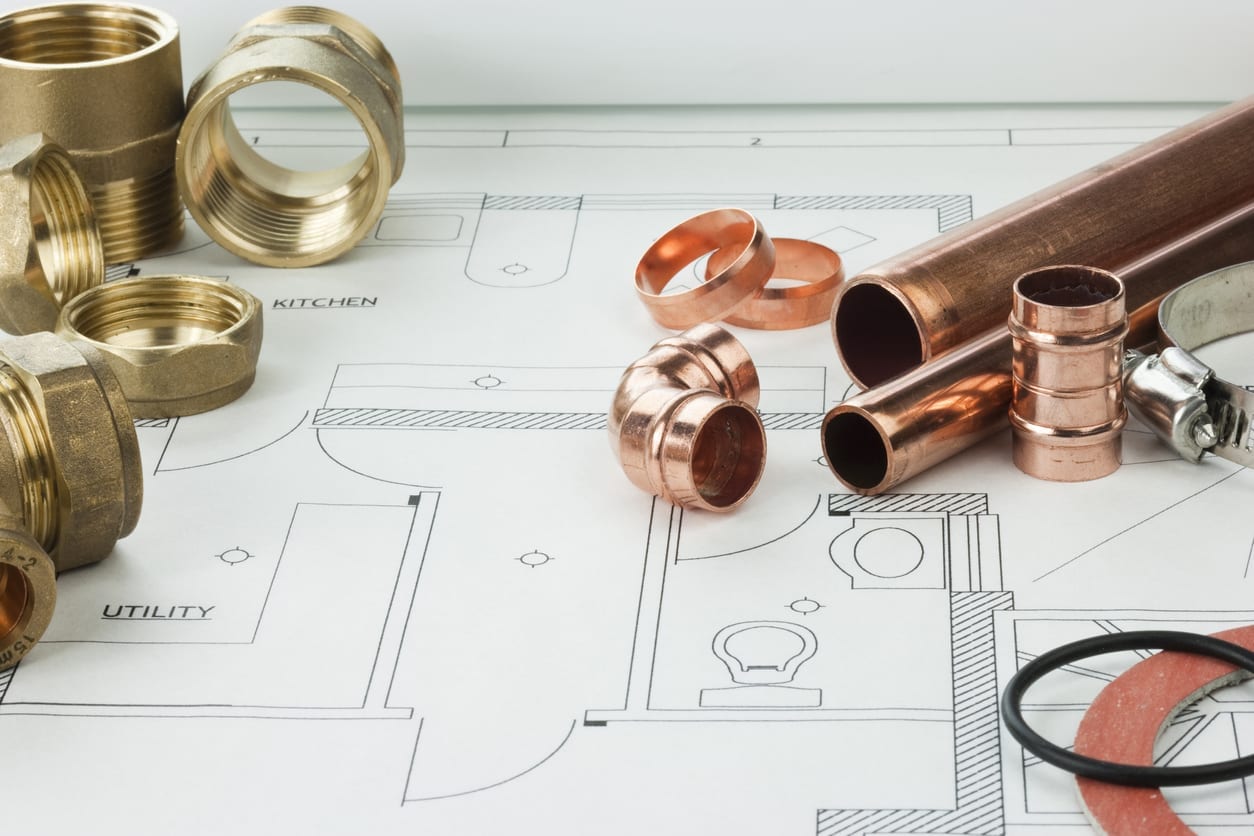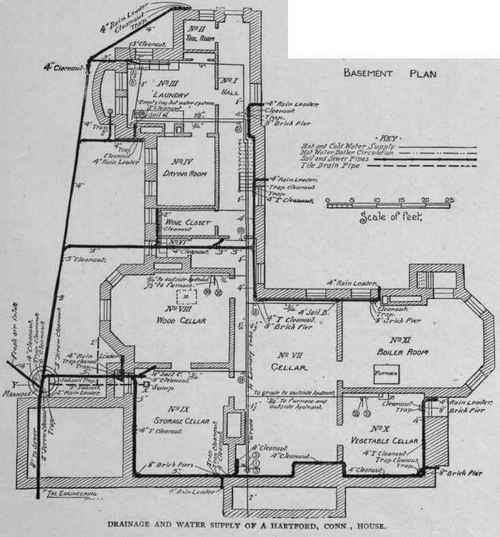What You Need to Know About Your House's Plumbing System Anatomy
What You Need to Know About Your House's Plumbing System Anatomy
Blog Article
What are your insights and beliefs about The Inner Workings of Your Home's Plumbing?

Comprehending how your home's pipes system functions is vital for every property owner. From providing tidy water for drinking, food preparation, and bathing to securely removing wastewater, a properly maintained pipes system is critical for your family's health and wellness and convenience. In this comprehensive guide, we'll check out the detailed network that makes up your home's plumbing and deal ideas on upkeep, upgrades, and handling typical concerns.
Introduction
Your home's plumbing system is more than simply a network of pipelines; it's an intricate system that ensures you have access to tidy water and reliable wastewater removal. Understanding its components and how they collaborate can aid you stop pricey fixings and make sure every little thing runs smoothly.
Basic Elements of a Pipes System
Pipelines and Tubes
At the heart of your pipes system are the pipes and tubing that bring water throughout your home. These can be made from different materials such as copper, PVC, or PEX, each with its advantages in regards to longevity and cost-effectiveness.
Components: Sinks, Toilets, Showers, and so on.
Fixtures like sinks, commodes, showers, and bath tubs are where water is used in your home. Understanding how these components link to the plumbing system aids in detecting issues and intending upgrades.
Shutoffs and Shut-off Factors
Valves control the circulation of water in your pipes system. Shut-off shutoffs are important throughout emergency situations or when you need to make fixings, enabling you to isolate parts of the system without disrupting water flow to the entire house.
Supply Of Water System
Main Water Line
The major water line connects your home to the metropolitan supply of water or a personal well. It's where water enters your home and is distributed to various components.
Water Meter and Stress Regulator
The water meter measures your water use, while a stress regulator ensures that water moves at a risk-free pressure throughout your home's plumbing system, protecting against damages to pipes and fixtures.
Cold Water vs. Hot Water Lines
Understanding the distinction between cold water lines, which provide water directly from the main, and warm water lines, which bring warmed water from the water heater, aids in fixing and planning for upgrades.
Water drainage System
Drain Pipes Pipes and Traps
Drain pipes bring wastewater away from sinks, showers, and commodes to the drain or septic system. Catches prevent drain gases from entering your home and also catch debris that can cause obstructions.
Ventilation Pipelines
Ventilation pipelines enable air into the water drainage system, avoiding suction that can slow down water drainage and trigger catches to empty. Correct ventilation is essential for preserving the integrity of your pipes system.
Importance of Correct Drainage
Guaranteeing correct water drainage avoids back-ups and water damages. On a regular basis cleansing drains and preserving traps can protect against pricey repairs and prolong the life of your pipes system.
Water Heater
Types of Water Heaters
Water heaters can be tankless or typical tank-style. Tankless heaters warmth water on demand, while tanks store heated water for immediate use.
Updating Your Pipes System
Factors for Upgrading
Updating to water-efficient components or changing old pipes can enhance water quality, lower water costs, and increase the worth of your home.
Modern Plumbing Technologies and Their Advantages
Check out modern technologies like smart leak detectors, water-saving bathrooms, and energy-efficient water heaters that can conserve cash and decrease ecological influence.
Price Considerations and ROI
Determine the upfront costs versus long-lasting savings when thinking about pipes upgrades. Several upgrades pay for themselves via reduced utility expenses and less repair services.
How Water Heaters Attach to the Plumbing System
Comprehending just how water heaters link to both the cold water supply and warm water circulation lines helps in identifying concerns like not enough hot water or leaks.
Upkeep Tips for Water Heaters
Consistently purging your water heater to get rid of sediment, inspecting the temperature setups, and inspecting for leaks can expand its lifespan and boost energy effectiveness.
Usual Pipes Issues
Leakages and Their Causes
Leaks can happen because of maturing pipelines, loose fittings, or high water pressure. Dealing with leaks immediately protects against water damage and mold growth.
Blockages and Blockages
Blockages in drains and bathrooms are usually brought on by purging non-flushable products or a buildup of grease and hair. Making use of drainpipe displays and being mindful of what goes down your drains pipes can avoid obstructions.
Indicators of Plumbing Troubles to Look For
Low tide pressure, slow-moving drains pipes, foul odors, or abnormally high water costs are indications of possible plumbing problems that should be resolved immediately.
Pipes Upkeep Tips
Routine Examinations and Checks
Set up annual pipes evaluations to catch problems early. Search for indications of leakages, corrosion, or mineral build-up in faucets and showerheads.
DIY Maintenance Tasks
Basic jobs like cleansing tap aerators, looking for bathroom leaks utilizing dye tablets, or shielding revealed pipelines in chilly climates can stop major pipes issues.
When to Call a Specialist Plumbing Technician
Know when a plumbing concern requires specialist know-how. Trying complex repair services without correct knowledge can lead to more damages and greater repair work costs.
Tips for Minimizing Water Use
Simple practices like dealing with leakages promptly, taking much shorter showers, and running full loads of laundry and dishes can conserve water and lower your utility bills.
Eco-Friendly Pipes Options
Take into consideration lasting plumbing materials like bamboo for floor covering, which is durable and eco-friendly, or recycled glass for countertops.
Emergency Readiness
Actions to Take Throughout a Pipes Emergency
Know where your shut-off valves are located and just how to switch off the water in case of a ruptured pipeline or major leak.
Importance of Having Emergency Contacts Convenient
Maintain contact details for neighborhood plumbing technicians or emergency situation solutions easily offered for quick action throughout a plumbing crisis.
Ecological Impact and Conservation
Water-Saving Fixtures and Devices
Installing low-flow faucets, showerheads, and bathrooms can considerably reduce water usage without sacrificing efficiency.
Do It Yourself Emergency Situation Fixes (When Appropriate).
Short-term solutions like using air duct tape to spot a leaking pipeline or placing a container under a dripping tap can minimize damages until an expert plumber arrives.
Conclusion.
Comprehending the anatomy of your home's pipes system equips you to preserve it properly, saving money and time on repair work. By complying with normal maintenance regimens and staying educated regarding modern pipes technologies, you can ensure your pipes system operates successfully for many years to come.
HOW YOUR PLUMBING SYSTEM WORKS
Which Pipes Do What?
Blue lines = fresh water supply entering the building Red lines = hot water supply entering the building Grey lines = pipes carrying waste away from the building and venting pipes carrying gases away from the building (through the roof) YOUR MAIN PLUMBING SYSTEMS
There are two main plumbing systems that support your home s basic plumbing needs one that brings clean water into your home, and one that sends dirty water away from your home. Connected to the toilet, bath, shower, and other faucets in your home, these two systems keep your water flowing in the right directions.
ACCESSING FRESH WATER
Fresh and clean water is brought into your home through the main water supply line . Filtered through one pipe, this water is pressured to flow into the various fixtures in your home at any given time.
This water can be sourced from a well located on your property, a pond or river (mostly cottages), or, as in most cases, from the city s municipal water treatment centre. However, it is important to note that water that is untreated, such as the water siphoned from ponds or rivers, may not be safe to drink. Personal water supplies always need to be treated for hardness and contaminants before consumed.
MUNICIPAL WATER SUPPLIES
Improve taste and odour Remove sediment Eliminate hardness Reduce chlorine COLD WATER SUPPLY VS. HOT WATER SUPPLY
Cold water flows into your home or building through the service line, which then distributes hot or cold water to your fixtures. This line is most commonly run through a central column that runs floor to floor. Hot water runs in short and straight pipes as the longer the pipeline, the more heat that will be lost in the transfer. Having shorter pipes also allows residents to access hot water more quickly.
WASTE WATER SYSTEM
Your wastewater system is divided into two parts pipes that send wastewater away from your home and venting pipes that send sewer gas away from your home. Sewage water travels through pipes that flush the water and waste towards local sewers that are operated and managed by your city or town. Most sewer systems rely on gravity to move the wastewater to where it needs to go.
The further away from your toilet or sink, the larger wastewater pipes become. This allows for waste to be disposed of from various parts of your home or business at once without pipe blockages. The angle and flow of these pipes are also essential for keeping your waste pipes clear of build up.
https://harrisplumbing.ca/how-your-home-plumbing-system-works/

Do you like reading up on ? Leave feedback directly below. We'd be happy to see your suggestions about this blog post. Hoping that you come back again in the future. Feel free to set aside a second to distribute this content if you liked it. Thank you so much for taking the time to read it.
Need Help? Hire Us Now! Report this page